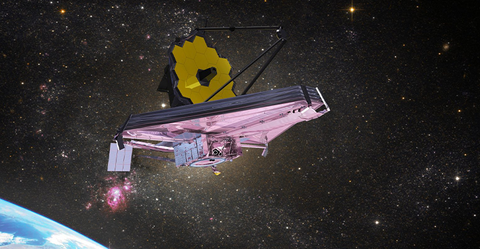On Christmas day of 2021, NASA launched it's largest, most powerful telescope into space. About 1 month later, on January 24, 2022, The James Webb Telescope arrived at its final destination in the cosmos and will orbit nearly 1 million miles away from Earth.
Here are 4 recent exciting discoveries by the James Webb Space Telescope (JWST)!
Discovery of Extremely Distant Galaxies:
In July 2022, the JWST identified two exceptionally distant galaxies using NIRCam images. These galaxies have photometric redshifts of 11.5 and 16.4, meaning they existed when the universe was approximately 390 and 240 million years old, respectively. These findings are significant as they push the boundaries of our understanding of the universe's early stages. The Hubble Space Telescope had not detected these galaxies due to their faintness and wavelengths outside Hubble’s sensitivity. More at NASA>
Identification of Methane in an Exoplanet’s Atmosphere:

The JWST detected methane at a high confidence level (6.1-sigma) in the atmosphere of an exoplanet. This discovery is noteworthy because it allows for a deeper understanding of the planet's composition and formation. It also offers an opportunity to compare exoplanets with planets in our solar system, where methane is commonly found. More at NASA>
Confirmation of the First Exoplanet:
The JWST confirmed its first exoplanet, LHS 475 b, in January 2023. This planet is almost the same size as Earth, with 99% of Earth's diameter. The discovery was significant as it demonstrated JWST's capability to study Earth-size, rocky planets outside our solar system, opening new possibilities for exploring exoplanetary atmospheres. More at NASA>
New Features in the Heart of the Milky Way:

In November 2023, the JWST revealed new details of Sagittarius C, a star-forming region about 300 light-years from the Milky Way’s central supermassive black hole, Sagittarius A*. This observation includes never-before-seen features in the dense center of our galaxy, providing insights into the processes occurring in this complex region. More at NASA>
These discoveries highlight the JWST's ability to expand our understanding of the universe, from our own galaxy to the most distant reaches of space.
The telescope will spend 5-10 years studying the formation of the universe’s earliest galaxies, how they compare to galaxies today, how our solar system was created, and if there is life exists on other planets.
The History Of The James Webb Telescope
The Webb Telescope was an international collaborative creation of NASA, the European Space Agency and the Canadian Space Agency. Thousands of engineers and hundreds of scientists from around the globe, helped to make this space technology become a reality.
The development first began in 1996, when it was know as the Next Generation Space Telescope, before being renamed in 2002. It's now named after James Webb, who was the head of NASA in the 1960's and helped launch the Apollo program (the same program that Astronaut Foods was commissioned for).
Numerous setback and delays, including a redesign ended up costing $10 billion!
The construction of the telescope was completed in 2016, however it underwent extensive testing before its approval to launch.
How Does It Work?
The Webb Telescope is an infrared telescope. It uses infrared radiation to detect objects in space.
This technology is able to view celestial bodies, such as stars, nebulae and planets that are too cool or too faint to be observed in visible light (what we are able to see).
What's Its Purpose
There are four goals for the JWST mission.
Goal #1: Scientists want to study the first stars and galaxies formed after the Big Bang.
Goal #2: Comparing the galaxies from the past to those of today.
Goal #3: Study how stars and planetary systems, like our solar system, formed.
Goal #4: Study planets outside of our solar system to look for signs of life.
Climb Aboard
The James Webb Space Telescope’s revolutionary technology will study every phase of cosmic history. This very telescope will help us understand the origins of the universe and our place in it. If that doesn't give you goosebumps, then we don't know what will.
This space technology will reveal questions that our human species have been trying to answer from the beginning and NASA is giving you first-hand access to be apart of history by following the JWST mission through every step of its journey. From a live Webb tracker, to news, events, and other updates, you can be in the know about all things Webb on NASA's website.
Follow Webb's entire story & mission here!


![[Contest now Over] Enter to win an Estes Rocket NASA SLS & an Astronaut Foods Collection Pack!](http://astronautfoods.com/cdn/shop/articles/Astronaut_and_Estes_Rockets.jpg?v=1695322851&width=480)



